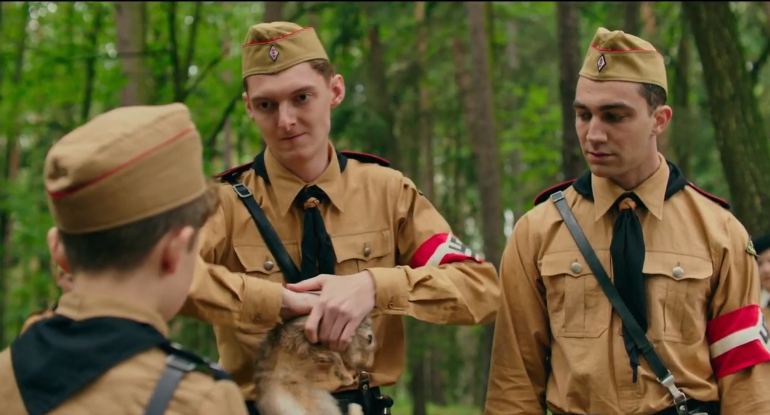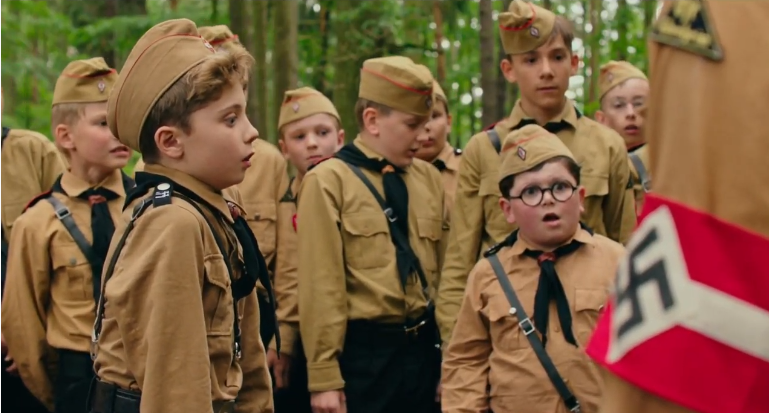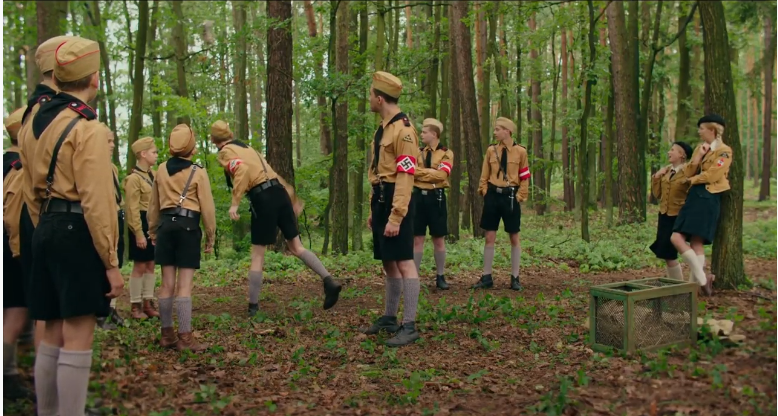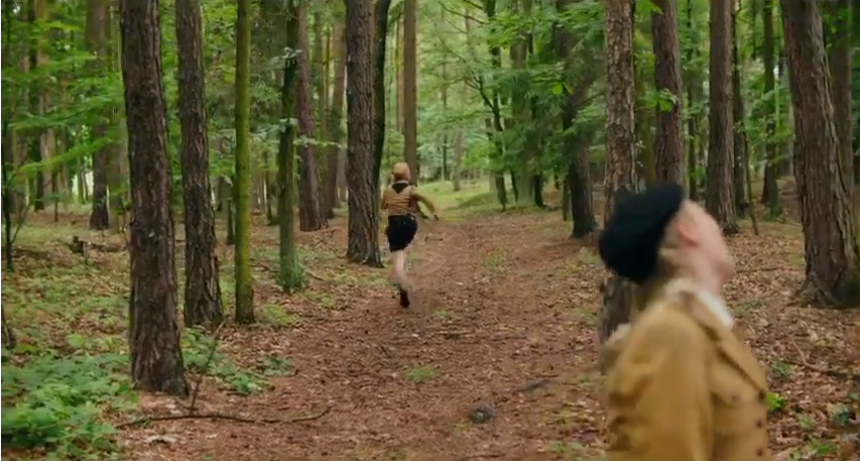
Jojo Rabbit (Taika Waititi, 2019) follows a young German boy growing up during World War Two. During a sequence depicting Jojo’s education, a rabbit is used as a symbol of morality to train a group of Hitler Youth. The children unanimously agree that they would kill for Germany – this is then put to the test. When Jojo is instructed to kill the rabbit he is in a dilemma: show that he is capable of killing on command, or abide by his personal moral code and let the animal live. The rabbit evokes a feeling of helplessness as it is passed from the arms of Hans to Jojo, continuously being confined by humans who may harm it. Unable to emotionally detach himself after looking at the rabbit, he sets it down on the ground in a wide shot attempting to set it free. The enclosed woodland in figure 1 invokes the idea that the animal is able to escape and obtain freedom away from the constraints that humans have thrust over it. However, this is immediately dematerialised due to the confinement in a wider space. The rabbit on the ground is now completely surrounded by Nazis and the pressing desire to harm the animal.

Figure 2 
Figure 3
The rabbit remains still as Hans walks over and picks it up as the point of view switches to an over shoulder shot. Jojo is staring at Hans as he puts his hands around the rabbit’s neck (figure 2) while Hans menacingly stares back, mentally substituting Jojo in its place as he is labelled weak over his emotional attachment to living things. There is an unsettling diegetic snap as he breaks the rabbits’ neck. This death electrifies the audience even though it is not physically shown, appealing to their sympathetic recognition that human bones would make the same sound. The shot quickly flickers to figure 3 through the film’s continuity editing to see the emotional reaction of the children: numerous children are shocked and one rapidly looks away from the violence. The shot is strategically composed blocking the left side of every child, concealing their swastika armband that is visible from the commander in the foreground of the shot. The children still have hope compassionate, unlike their commanders, as their emotional response to the murder of the rabbit shows they still possess empathy that Nazism does not accommodate for. They are merely scared into submission instead of desiring it.

Figure 4 
Figure 5
The sequence returns to the wide shot in figure 1 leaving the audience with a cruel irony as the rabbit is only able to reach the freedom of the woodland once it is dead. Contrasting this, Jojo manages to flee away from danger. He is given zoomorphic characteristics, being labelled ‘Jojo Rabbit’and mocked for being a ‘scared little rabbit’ due to his impassiveness. This foreshadows Jojo’s successful attempt of fleeing from the Nazi regime, breaking away from the brutality and brainwashing of their organisation.
Filmography
Waititi, Taika, dir., Jojo Rabbit (Fox Searchlight Pictures , 2019)